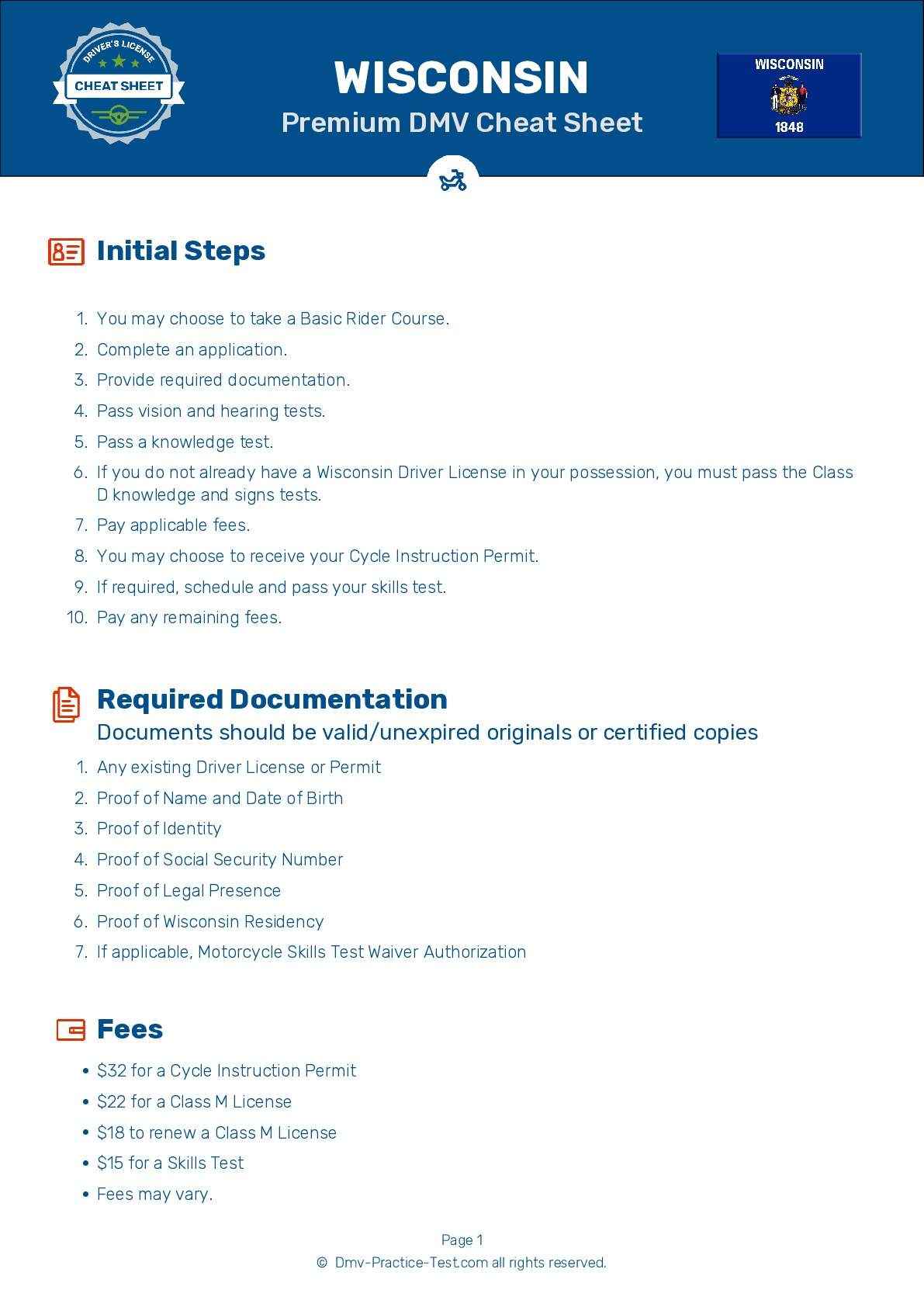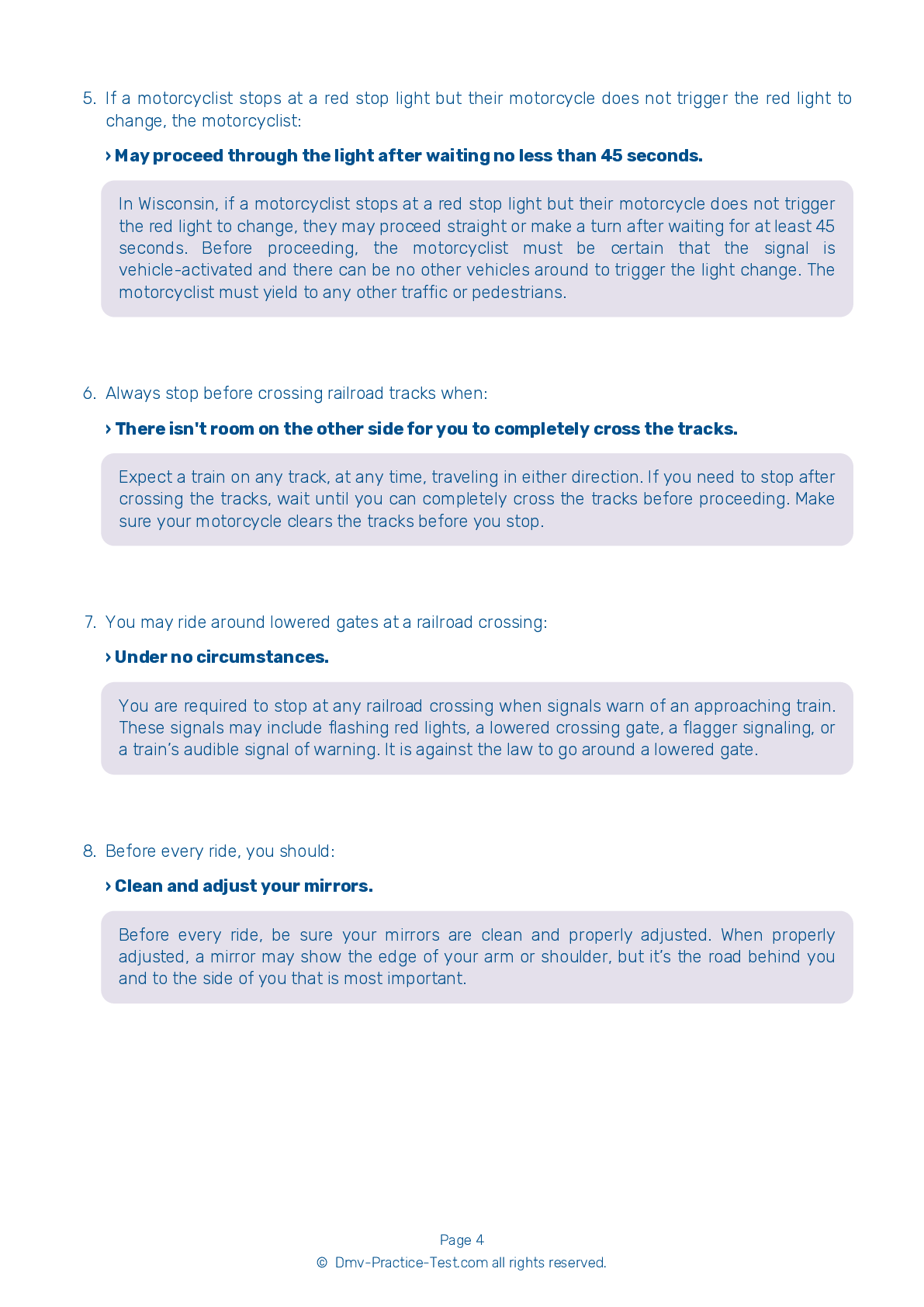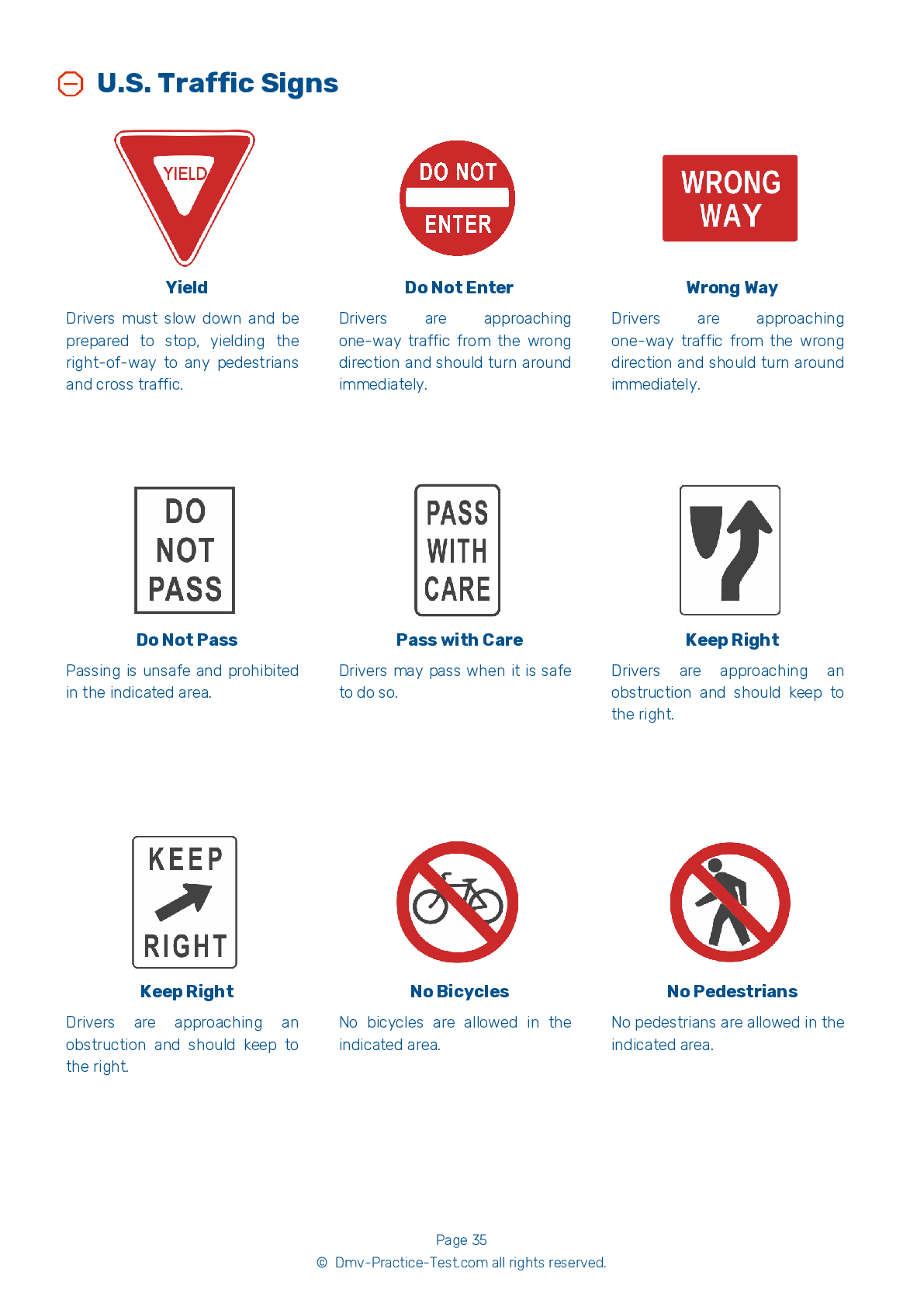Motorcycle Test | License WI 2025 | FREE Online Practice! #3 Page 4 of 5
Take this FREE motorcycle test (license in WI 2025) to check your knowledge of the road rules. To improve your results, download a motorcycle handbook online, study theory, and practice for free on our website. Still worried about how to get a motorcycle license in Wisconsin in 2025? Check our website for more sample tests, train as much as possible, and boost your grades!
25 . When you are being passed, you should:
When being passed, it is generally a good idea to ride in the center portion of your lane. Being on the side nearest the passing vehicle increases your risk of a collision. Being on the side farthest from the passing vehicle may prompt the other driver to merge back into your lane before it is safe.
26 . Most motorcycle crashes occur:
Most motorcycle crashes happen in broad daylight. Wearing bright colors and reflective materials is always recommended when riding, even during the day.
27 . This sign means:
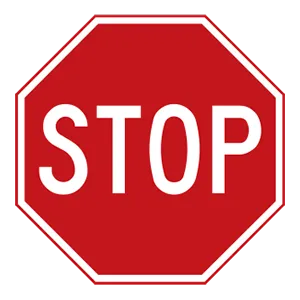
Eight-sided traffic signs warn drivers that they must stop and yield the appropriate right-of-way at an intersection. Drivers may proceed when it is safe to do so.
28 . When riding a motorcycle, your lane position:
An appropriate lane position can increase your ability to see and be seen. Being properly positioned in a lane can also help you avoid blasts of wind coming off of surrounding vehicles.
29 . If a motorcycle rider takes a turn too fast, they may:
Taking a turn or curve too fast may cause a rider to lose control of their motorcycle. The motorcycle may cross into another lane of traffic or careen off the road.
30 . When riding on a slippery surface, you should:
Strategies for safe riding on slippery surfaces include reducing your speed, avoiding sudden moves, staying away from the edge of the road, and riding in the tire tracks left by other cars.
31 . Your primary source for information about your motorcycle should be:
Your owner's manual should be your primary source for information about your specific motorcycle. Your manual will include information about the motorcycle's specifications, operation, and suggested maintenance.
32 . This sign means:
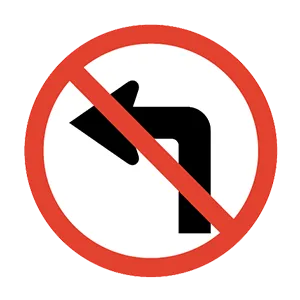
This sign means drivers cannot make a left turn. It is unsafe and unlawful to make a left turn at an intersection where this sign is posted.
See the exact questions that will be on the 2025 Wisconsin DMV exam.
99.2% of people who use the cheat sheet pass the FIRST TIME
Jeneen was tired of paying $5/gallon. She got herself a scooter that required the motorcycle license. She studyed the motorcycle test cheat sheet and passed her test the next day!
Christopher tells us how he knew nothing prior to obtaining the motorcycle study guide, and he only got one question wrong because he clicked on the wrong answer by mistake.
